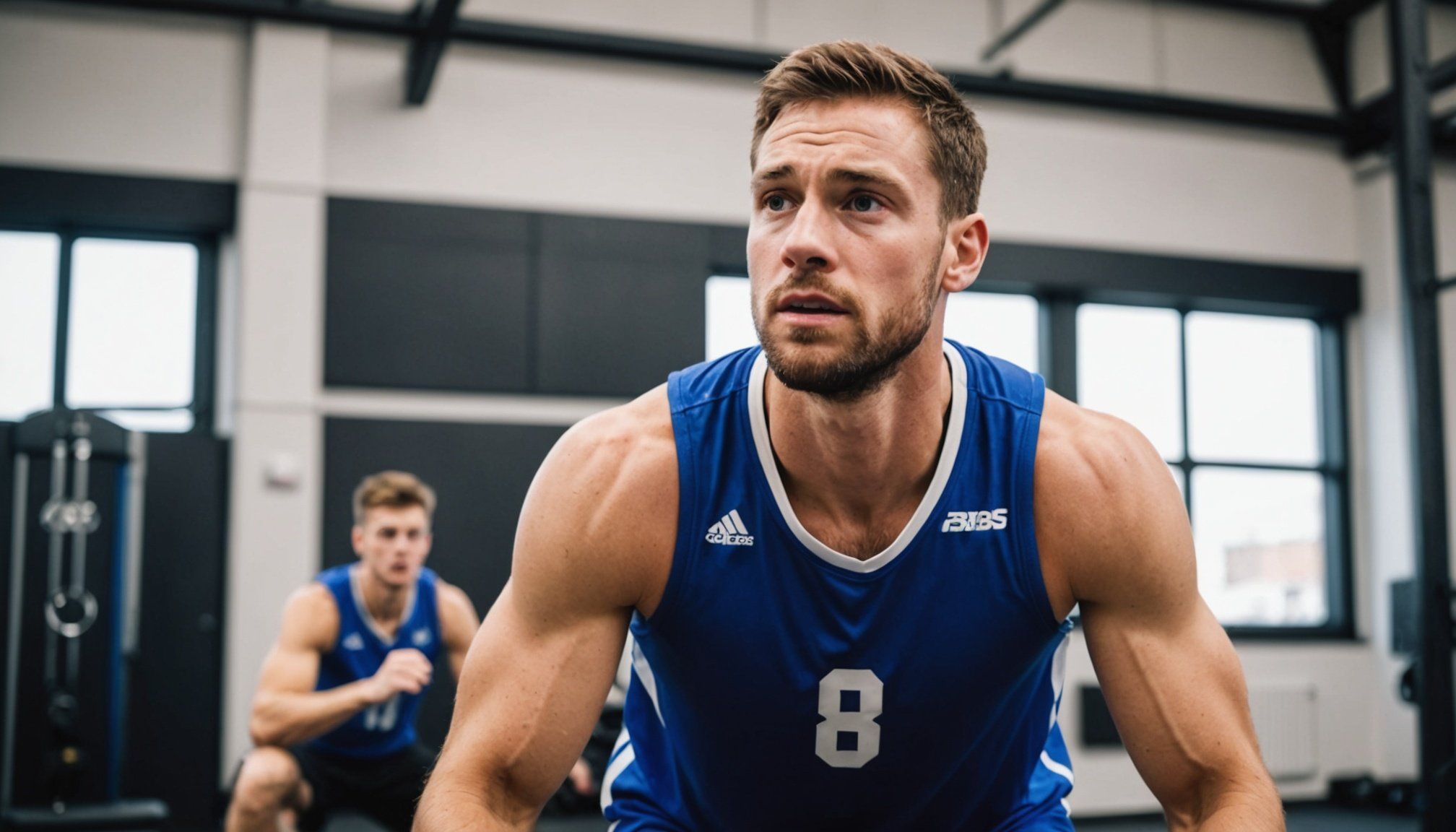Ultimate Guide to Shoulder Rehab for UK Basketball Athletes: Boost Recovery and Strength with These Essential Exercises
Understanding the Importance of Shoulder Health in Basketball
Shoulder health is paramount for basketball athletes, as the shoulder joint is one of the most mobile and vulnerable joints in the body. The demands of basketball, including shooting, passing, and rebounding, place significant stress on the shoulders, making them prone to injuries such as dislocations, rotator cuff strains, and shoulder impingement.
“Shoulder stability is crucial for basketball players. It’s not just about preventing injuries but also about maintaining peak performance,” notes a strength and conditioning coach specializing in basketball training[1].
Also to discover : Boosting agility: innovative techniques for uk basketball teams to improve players” lateral movement
Common Shoulder Injuries in Basketball
Basketball athletes are at risk of various shoulder injuries, each requiring specific rehabilitation approaches.
Dislocations and Subluxations
These occur when the shoulder joint is forced out of its normal position. Rehabilitation involves restoring stability and strength to the surrounding muscles.
Also read : Ultimate guide to injury prevention: top cross-training strategies for uk basketball players
Rotator Cuff Injuries
The rotator cuff, comprising four muscles and their tendons, is essential for shoulder stability and movement. Injuries to this area can range from mild strains to severe tears.
Shoulder Impingement
This condition occurs when the tendons of the rotator cuff are compressed, leading to pain and limited mobility.
Essential Exercises for Shoulder Rehabilitation
Rehabilitating a shoulder injury in basketball athletes involves a comprehensive program that includes strength training, flexibility exercises, and proper physical therapy.
Dynamic Stability Exercises
Dynamic stability exercises are designed to challenge the rotator cuff and improve overall shoulder stability.
- Medicine Ball Exercises: Using a medicine ball, athletes can perform various movements such as rotational throws and catches. These exercises help in strengthening the rotator cuff and improving dynamic stability[2].
- Crossover Symmetry Exercises: These exercises target the scapular chain, which is critical for shoulder stability and movement. They involve using resistance bands to perform crossover motions that engage the muscles around the shoulder blade[2].
Strength Training Exercises
Strength training is vital for rebuilding the strength and endurance of the shoulder muscles.
- Resistance Band Exercises: Resistance bands can be used to perform exercises like shoulder rotations, lateral raises, and front raises. These exercises help in strengthening the deltoids and rotator cuff muscles.
- Dumbbell Exercises: Dumbbells offer a more natural range of motion compared to machines and can be used for exercises like dumbbell shoulder presses, lateral raises, and front raises. These exercises engage multiple muscle groups simultaneously, promoting better balance and coordination[5].
Sample Weekly Training Plan for Shoulder Rehabilitation
A structured training plan is essential for effective rehabilitation. Here’s a sample weekly plan:
| Day | Focus | Exercises |
|---|---|---|
| Monday | Light Strength and Mobility | Resistance band rotations, dumbbell lateral raises, light shoulder presses |
| Tuesday | High-Intensity Interval Training (HIIT) | HIIT workouts focusing on cardiovascular endurance |
| Wednesday | Rest or Active Recovery | Light mobility work or restorative yoga |
| Thursday | Strength Conditioning Focusing on Shoulder and Core | Dumbbell shoulder presses, rotational movements with medicine ball |
| Friday | Basketball Skills Training | Shooting and passing drills with emphasis on proper technique |
| Saturday | Restorative Yoga or Pilates | Focus on flexibility and core strength |
| Sunday | Rest Day | Complete rest or light stretching |
Integrating Core Strength and Flexibility
Core strength and flexibility are integral to overall body strength and stability, which in turn support shoulder health.
Core Stability Exercises
- Planks: Planks enhance core endurance and stability, which is crucial for maintaining proper posture and reducing the risk of shoulder injuries.
- Rotational Movements: Exercises like rotational medicine ball throws improve core strength and agility.
- Flexibility Exercises: Incorporating exercises like shoulder stretches and chest opens can improve flexibility and reduce the risk of shoulder impingement.
Case Studies and Expert Insights
Successful rehabilitation programs often highlight the importance of a balanced approach that includes strength training, flexibility exercises, and proper physical therapy.
Testimonials from Coaches and Athletes
“Structured rehabilitation programs have been instrumental in our athletes’ recovery. By focusing on both strength and flexibility, we’ve seen significant improvements in their overall performance and reduced injury rates,” says a coach from a UK basketball program[1].
Athletes also report feeling physically stronger and more confident after undergoing personalized conditioning plans. “The increased strength in my shoulders has directly translated to better game performances. I feel more stable and confident on the court,” shared one athlete[1].
Preventing Common Mistakes in Shoulder Rehabilitation
To ensure effective rehabilitation, it’s crucial to avoid common mistakes.
Overemphasizing Certain Muscle Groups
- Balanced Routine: Ensure that the training program is well-rounded and focuses on strength, agility, and endurance. Overemphasizing certain muscle groups can lead to imbalances and increase the risk of injury[1].
Neglecting Mobility and Flexibility
- Incorporating Mobility Exercises: Regular mobility and flexibility exercises are essential to maintain a full range of motion and prevent stiffness and pain[1].
Practical Advice for Athletes and Coaches
Here are some practical tips for athletes and coaches to improve shoulder rehabilitation:
Periodized Training
- Periodization: Use periodized training to vary the intensity and focus of workouts. This helps prevent burnout, promotes peak performance, and maximizes rest and recovery[1].
Proper Technique
- Proper Form: Ensure that athletes use proper form during exercises to avoid exacerbating injuries. Proper technique is key to effective rehabilitation and long-term health[1].
Active Recovery
- Active Recovery: Incorporate active recovery days, such as restorative yoga or light mobility work, to help the body recover without compromising physical health[1].
Shoulder rehabilitation for UK basketball athletes is a multifaceted process that requires a balanced approach incorporating strength training, flexibility exercises, and proper physical therapy. By understanding the common injuries, integrating essential exercises into training programs, and avoiding common mistakes, athletes can improve their overall performance, reduce injury risk, and ensure long-term athletic health.
“Shoulder health is not just about rehabilitation; it’s about building a strong foundation that supports your entire athletic career,” emphasizes a sports rehabilitation expert.
By following these guidelines and incorporating the recommended exercises and training plans, basketball athletes can boost their recovery, enhance their strength, and achieve peak performance on the court.











